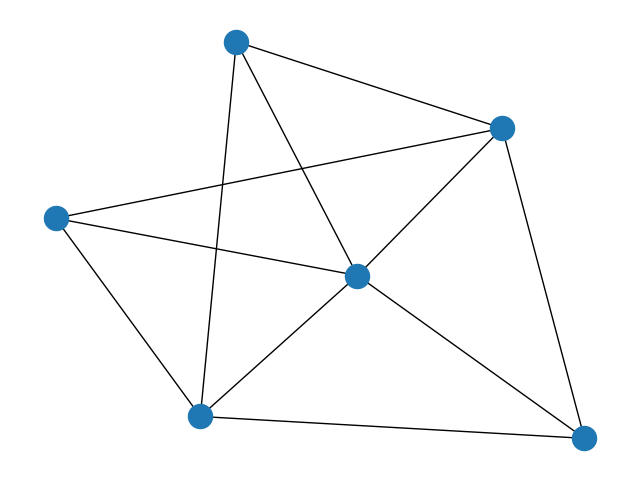complete_multipartite_graph#
- complete_multipartite_graph(*subset_sizes)[source]#
Returns the complete multipartite graph with the specified subset sizes.
(
Source code,png)
- Parameters:
- subset_sizestuple of integers or tuple of node iterables
The arguments can either all be integer number of nodes or they can all be iterables of nodes. If integers, they represent the number of nodes in each subset of the multipartite graph. If iterables, each is used to create the nodes for that subset. The length of subset_sizes is the number of subsets.
- Returns:
- GNetworkX Graph
Returns the complete multipartite graph with the specified subsets.
For each node, the node attribute ‘subset’ is an integer indicating which subset contains the node.
See also
complete_bipartite_graph
Notes
This function generalizes several other graph builder functions.
If no subset sizes are given, this returns the null graph.
If a single subset size
nis given, this returns the empty graph onnnodes.If two subset sizes
mandnare given, this returns the complete bipartite graph onm + nnodes.If subset sizes
1andnare given, this returns the star graph onn + 1nodes.
Examples
Creating a complete tripartite graph, with subsets of one, two, and three nodes, respectively.
>>> G = nx.complete_multipartite_graph(1, 2, 3) >>> [G.nodes[u]["subset"] for u in G] [0, 1, 1, 2, 2, 2] >>> list(G.edges(0)) [(0, 1), (0, 2), (0, 3), (0, 4), (0, 5)] >>> list(G.edges(2)) [(2, 0), (2, 3), (2, 4), (2, 5)] >>> list(G.edges(4)) [(4, 0), (4, 1), (4, 2)]
>>> G = nx.complete_multipartite_graph("a", "bc", "def") >>> [G.nodes[u]["subset"] for u in sorted(G)] [0, 1, 1, 2, 2, 2] ----
Additional backends implement this function
cugraph : GPU-accelerated backend.